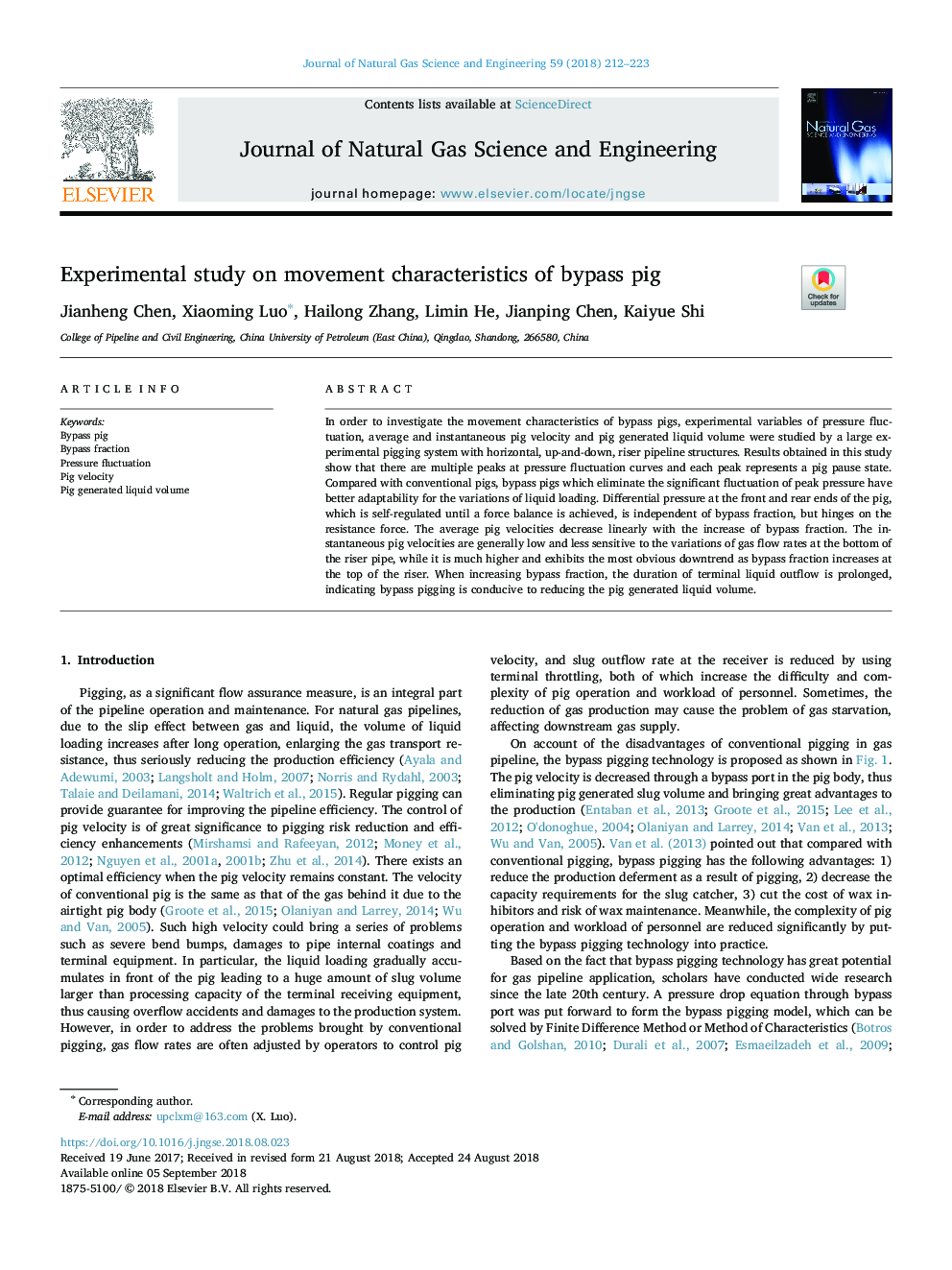| Article ID | Journal | Published Year | Pages | File Type |
|---|---|---|---|---|
| 10142716 | Journal of Natural Gas Science and Engineering | 2018 | 12 Pages |
Abstract
In order to investigate the movement characteristics of bypass pigs, experimental variables of pressure fluctuation, average and instantaneous pig velocity and pig generated liquid volume were studied by a large experimental pigging system with horizontal, up-and-down, riser pipeline structures. Results obtained in this study show that there are multiple peaks at pressure fluctuation curves and each peak represents a pig pause state. Compared with conventional pigs, bypass pigs which eliminate the significant fluctuation of peak pressure have better adaptability for the variations of liquid loading. Differential pressure at the front and rear ends of the pig, which is self-regulated until a force balance is achieved, is independent of bypass fraction, but hinges on the resistance force. The average pig velocities decrease linearly with the increase of bypass fraction. The instantaneous pig velocities are generally low and less sensitive to the variations of gas flow rates at the bottom of the riser pipe, while it is much higher and exhibits the most obvious downtrend as bypass fraction increases at the top of the riser. When increasing bypass fraction, the duration of terminal liquid outflow is prolonged, indicating bypass pigging is conducive to reducing the pig generated liquid volume.
Keywords
Related Topics
Physical Sciences and Engineering
Earth and Planetary Sciences
Earth and Planetary Sciences (General)
Authors
Jianheng Chen, Xiaoming Luo, Hailong Zhang, Limin He, Jianping Chen, Kaiyue Shi,
